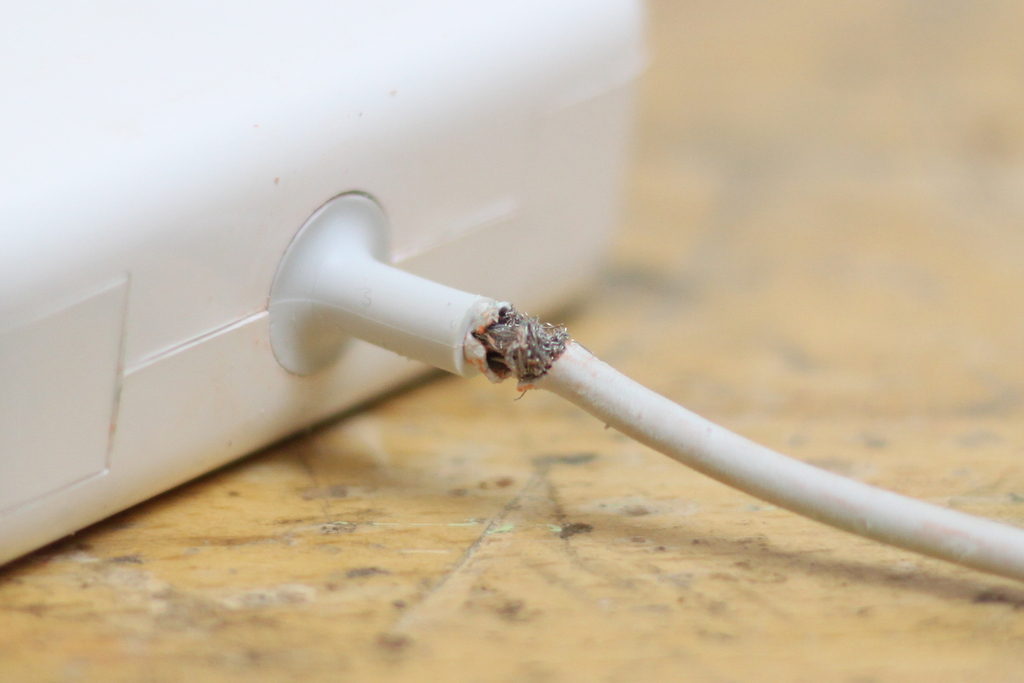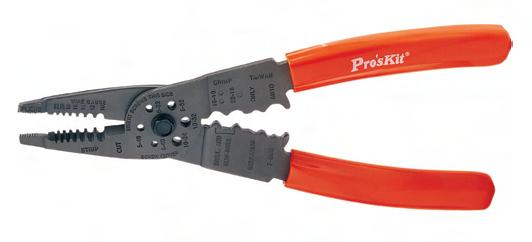Tutorial: Broken MacBook charger? Here is how to fix it!
If your MacBook is less than a year old, or if you have Apple Care+, the least painful way to fix a broken charger, is to have it replaced, at no cost, by Apple.
If Apple Care is not an option, and your MacBook is no longer under warranty, there are ways to restore a broken charger back to working conditions, without a degree in electrical engineering.

The best case scenario
If your charger still works, but the plastic around the wires is cracked, or starting to show signs of wear, the easiest way to prevent further damage to the cable, requires purchasing what is known as “liquid electrical tape”, a product typically found in hobby or hardware stores.
A liquid electrical tape works in the same way as sealing resin or caulk. It comes in liquid form, inside a sealed container. When poured over a surface, the contact with the air will turn the product into a rubbery solid block, similar to Latex, which will still allow a certain degree of flexibility.
The difference between regular resin and liquid electrical tape, is that its composition allows to isolate electricity, which makes it ideal to mend any type of small electrical wiring, such as broken MacBook, or iPad chargers.
It’s important to keep in mind that, as it is true with all chemicals, liquid electrical tape should be applied in a well ventilated area, as prolonged exposure to its fumes can be toxic.
The worst case scenario
If the cable of your charger is fried or severed to a point where charging your MacBook is impossible, you will need the following items to start:
- Patience and a steady hand
- A flat screwdriver
- Box cutter
- Wire stripper
- Black and white electrical tape (the regular kind)
- Krazy Glue, or similar rapid bond adhesive
- Soldering iron
- Zip ties
Stripping the cable:
The following instructions apply to most electrical cable. It’s recommended to use some throwaway cable for practice, before dealing with the actual MacBook charging cable.
Stripping a cable requires a hand-held clamp-like tool called the Wire Stripper.

Most wire strippers will feature a number of different size slots that will accommodate the right type of cable. The size applicable to MacBook charging cables is usually the biggest one found in most wire strippers, unless the tool doubles as Cable Slitter, with allows for bigger diameter cables, such as fiber optics, networking cables or power cords from large appliances.
To strip a cable, simply clamp the cable with the wire stripper, in such a way that it’s not physically squeezed or crushed by the tool, but at the same time, it cannot move.
Once the wire is securely clamped, simply pull the wire away from the tool, until the rubber jacket that is caught inside the wire stripper gives out and strips off, revealing the wiring within.
Depending on the tool and the hand, it might take a few tries to strip a wire properly.
Stripping a MacBook charging cord will present you with an outer layer of exposed electrical wiring, which wraps another, white jacketed wire. The white inner wire and the outer electrical wiring must be kept separate.
The next step is to twist the outer exposed wiring away from the white wire, and isolate it with black electrical tape, leaving at least an inch exposed for later soldering.
Next we will proceed to strip the white wire as well, so that just an inch of electrical wire will be exposed.
Disassembling the charging unit
Word of warning: this step will cause permanent damage to the plastic cover of the charger. It will work in the end, but its cosmetic appearance won’t be much to look at.
Using a box cutter, we will have to cut along the slit that runs the four sides of the box of the charger. This step will require some patience and persistence, as the two halves of the charger are superglued together. Finally, with the flat screwdriver, we will gently pry it open until the plastic shell opens up.
Black wire, white wire
When looking at the side opposite in respect to the wall outlet plug, we will see a black wire and a white wire.
This makes the following steps easier, as the white wire is the one that is meant to connect to the white wire found within the external cord we stripped earlier.
We will use the soldering iron to fuse the wiring from the two white cords together, and isolate them with white electrical tape, for good measure and visual simplicity.
Now that half the job is done, we will proceed to solder the black wire from the charger unit, to the exposed electrical wire we previously isolated in black tape.
Finally, we will wrap both cords in black electrical tape, and secure the bundle with zip fasteners.
The end result will provide protection for the wires, which will be less likely to bend and break in the future.
Putting it all back together
Since the shell of the charging unit is irreverably broken, we have three options to put it back together.
One option is to wrap it in white electrical tape, which will look ok, while being a less durable solution.
The uglier, but more durable solution, is to use plastic zip fasteners, which are less likely to break or lose grip overtime.
A third option is to apply Krazy glue or similar strong adhesive along the edge of the two halves, in an attempt to restore the outer appearance of the unit. This solution might work for a period of time, pending how often the unit is moved around or manipulated.
Too much work?
If the above steps are outside your comfort zone, you have the option of ordering a replacement to your broken MacBook charger, or any other accessory, one click away.